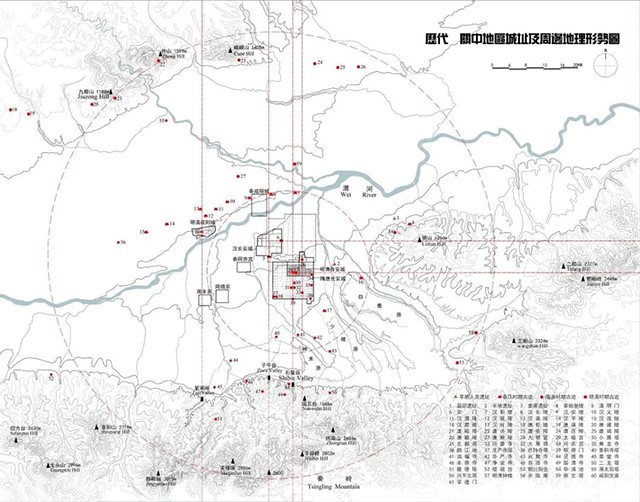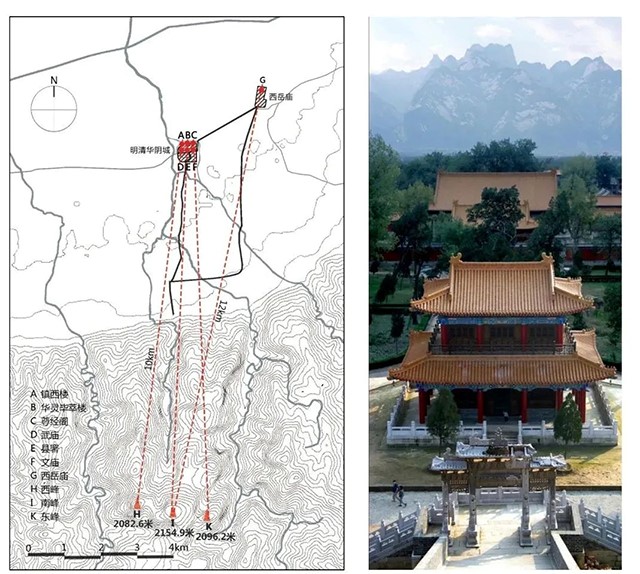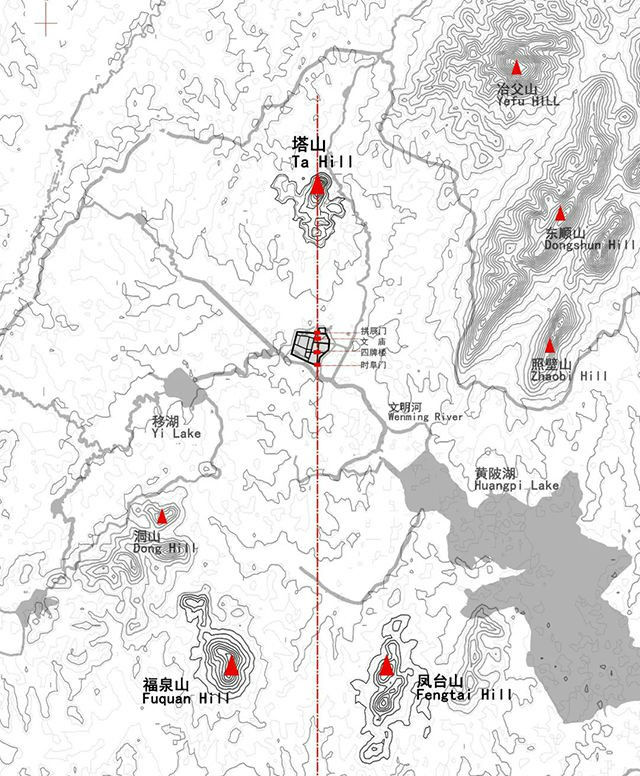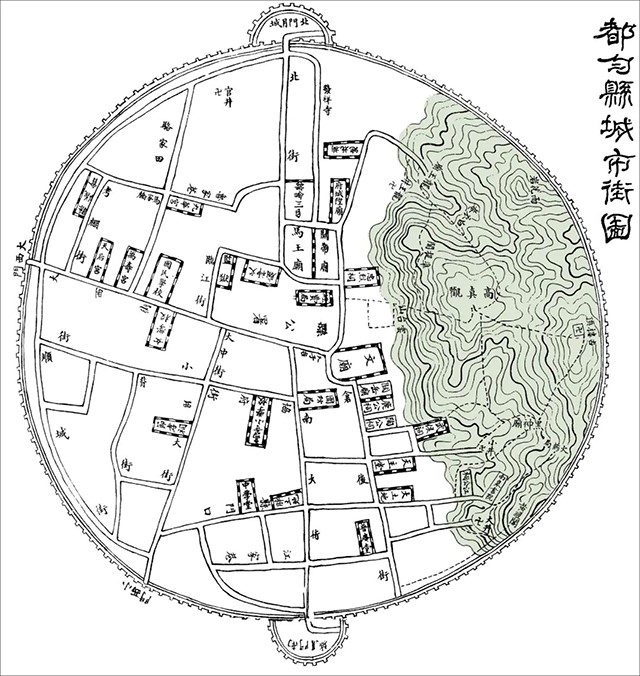


Introduction
China is a country rich in water resources and landform conditions. Since ancient times, the Chinese people have a special emotion of fear, worship and gratitude to the mountains. They emphasized the worship to the nature in the practice of city site selection, planning, design, and construction. These thoughts of building a city are not empty, blurred, virtual, but rational, fresh, cognitive. They are integrated into the philosophical thoughts of "Heaven and Man", becoming one of the most prominent characteristics of Chinese urban civilization. However, during the fast urbanization period, the traditional city building thoughts and most ancient city features are disappearing. Therefore, it is necessary to re-recognize the traditional thoughts of building cities in ancient times.

Prof. Wang Shusheng, President of Xi’an University of Architecture and Technology
Q1: Based on the traditional principles of city site selection of China, what kind of unique thoughts and wisdom can be found in the city building in combination with natural landscape, human environment and other unique ideas?
W: In thousands of years of Chinese planning and construction practices, an excellent planning and construction tradition with unique Chinese characteristics formed in generations of generations that is different from the West. Using natural landscape and managing cultural space are the two outstanding features, covering many aspects such as national space governance, regional order construction, city planning and construction, and engineering technology utilization.
In terms of city planning and construction, the ancients regarded mountains and rivers as the spatial coordinates, and paid attention to the discovery of mountains and rivers based on the experience of people on the ground. At the same time, the ancients emphasized the use of human behavior as a ruler, considering and selecting the perceivable and available surrounding landscapes for construction. They made the coordinate management to create a multi-level urban spatial pattern of "inner shape-outer shape-large shape".

Figure 1 Historic Sites of Xi'an
Another feature of China's city planning and construction is the emphasis on humanistic space. Its core is to cultivate the "people's mind" through the construction of the "meaning space" of the city. Chinese cities focus on the implementation of intangible cultural ideals into specific material spaces. Therefore, city planning and construction is also a "minded" undertaking.
The landscapes and culture speak to the natural and spiritual dimensions of cities respectively and are critical elements of city planning. The urban humanistic space is organically integrated with the natural landscape. The more important the humanistic meaning is, the more it is placed at the focal point of the natural landscape network. The natural landscape and the humanistic space complement each other to form the Chinese urban structure of landscape and cultural spaces. This is the essence of Chinese cities and an excellent planning and construction tradition with oriental wisdom.
Q2: How did ancient Chinese cities reflect the spatial characteristics of adapting to the topography and learning from the nature in the process of planning, design, and construction? What are the typical practice cases?
W: In ancient China, both capitals and local cities had accumulated valuable experience and wisdom in the planning practice of adapting to the topography and learning from the nature. In the past, city planning and construction generally emphasized to conform to the topography of the site and the direction of the river to build the boundary of the city and the road skeleton, forming a structure that is beneficial to defense. They used topographical relationships such as high and low, open-mindedness, yin and yang, etc., to arrange the functional areas. They also combined the "places of victory" such as mountain plateaus and water bays inside and outside the city site or the "cultural highlands" associated with historical sites to create a characteristic space system. Overall, it can be described as an active creation based on the principle of maximizing the use of natural potential.
From the perspective of historical practice, Chang'an (now Xi'an), Luoyang, Jiankang (now Nanjing), Hangzhou, Beijing, Suzhou, Guilin, Fuzhou and other famous capitals are all exemplary works. In addition, there are also ordinary local towns with their own characteristics and their own splendors. For example, Huayin in Shaanxi, Lujiang in Anhui, and Duyun in Guizhou are all classic cases of city planning and construction combined with the nature.

Figure 2 Schematic diagram of Huayin city

Figure 3 Schematic diagram of Lujiang city

Figure 4 Schematic diagram of Duyun city
Q3: How to learn from and use traditional Chinese landscape and humanistic wisdom to enable contemporary cities to realize the vision of "seeing the mountains and seeing the water"?
W: In recent years, China’s central government has attached great importance to the protection and inheritance of history and culture in urban and rural construction, and proposed that city planning and construction should "keep mountains and water surfaces visible, and make cities nostalgic". This is to make city planning and construction pay attention to combining natural landscapes, inheriting the excellent Chinese traditional culture, and shaping the urban landscape and humanistic spatial pattern of the new era. First of all, it is required to respect and protect the historical and cultural spatial pattern, safeguard the city's spatial genes, and fully understand a city’s scientific, technological and artistic values. Then, it is necessary to study the cultural and spiritual connotation of the city and the ins and outs of the urban spatial pattern, and calmly think about the scientific basis and development logic of the urban landscape and humanistic spatial pattern. Finally, on the basis of protecting the historical pattern, it is needed to create a new landscape and humanistic spatial pattern with a broader vision.
In the specific planning practice, it is necessary to sort out the local landscape, understand the context of the landscape environment, unify the urban landscape order and the construction of humanistic space, and prioritize the layout of the buildings and key areas with important cultural significance. At the key nodes of the network, it can be used as the coordinate and skeleton to control and guide the urban form, and establish a unique pattern of organic integration of urban space and natural landscape. It is also necessary to pay attention to the continuity and the coordination of the new and the old, emphasize the dynamic survival of the existing landscape and humanistic order of planning and construction, and organically integrate elements such as new key locations, landmark buildings and historical locations to create a life-mark urban spatial order.
Of course, the inheritance and development of traditional Chinese humanistic wisdom, and the protection and creation of the spatial pattern of landscape in the new era will ultimately depend on people. There are both successful experiences and failure lessons in Chinese history. This requires decision-makers, practitioners, and participants in contemporary city planning and construction to have respect for the update of historical civilization, and to internalize the excellent Chinese traditions. City planning and construction will surely create a new realm of cultural renaissance.
Source: <http://www.planning.org.cn/news/view?id=11652&cid=15>
Translated by Wang Miao